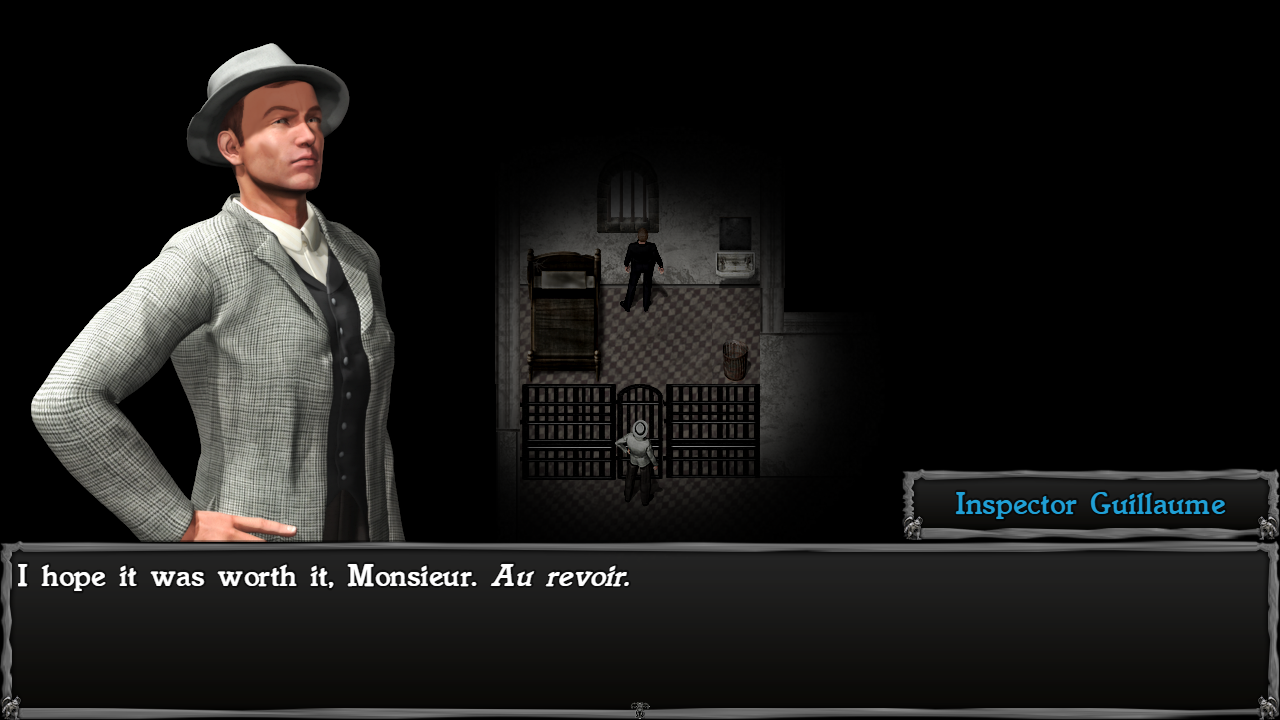|
With The Deed II set to be released later on this year, I thought it would be nice to whet your appetites in the meantime by posting a few previews of different aspects of the game. This first one will focus on some of the research behind the setting of the game – a Parisian brothel during the interwar years. This was an era of great change for the city of love, and for French society in general. Class divisions were slowly eroding, for various reasons. The status and role of women in society was becoming increasing fluid, and children were often much better educated than their parents. That said, Paris was not without its fair share of problems – and some of the old social divisions did still hold true. Across the city there was a significant housing shortage, with many families forced to live together in cramped apartments with only a couple of rooms, sleeping on folding cots in their kitchens or living rooms. There was certainly no shortage of crime and addiction in certain areas of the city. “THE BUSINESS”Between 1800 and the mid 20th century, Paris was said to provide the finest and most luxurious brothels in the western world. These places were known by many names, including maisons de tolerance, maisons closes or maisons d’illusions. At the peak of “the business”, more than two thousand registered brothels were policed by the city’s vice squads – or police des moeurs. There were many rules and restrictions which had to obeyed. Brothels were forbidden from advertising except at night, when they could do so by hanging a red lantern over the door. Every girl in residence must have her own room with access to washing facilities, and must be seen by a doctor every week. Any sign of infection and she might be removed to the notorious Saint Lazare prison hospital. Despite all of these stringent requirements, brothels in general were not only tolerated but were largely accepted and even embraced by French society at large. Many former madames went on to open very respectable businesses, and the opening of one prominent brothel was attended by the French Minister of Justice himself. The future King Edward VII of the United Kingdom was a famous patron of a brothel named Le Chabanais, and he visited it regularly during the 1880s and 1890s. One room even had his coat of arms depicted above the bed. Since Edward was a particularly large man, a cabinet-maker named Louis Soubrier was hired to construct a special “love seat” for him, which enabled his sexual partners to indulge his particular vices without too much effort on his part. And indeed, any vices were indulged – with many brothels specialising in serving a very specific clientele. One thing I learned through my research was that, in portraying the brothels of this era, it’s impossible to exaggerate the level of decadence and the readiness to please. For example, there was even an establishment called L’Abbey which catered to the clergy. Unsurprisingly, their desires were often religiously-themed and masochistic in nature. CRIME AND PUNISHMENTOf course, for a game about homicide, this is also going to be a very important area of consideration!
The first thing to note is that the guillotine (“the blade of the widow”) was still very much in use as the standard method of execution in France, with the final convicts being killed in this way as late as 1977. During the time when The Deed II is set, as many as twenty people a year were still being executed by the guillotine – often for the crime of pre-meditated murder. However, in the case of female convicts there was generally a routine presidential pardon and their sentence was commuted to life in prison. Executions were often held in public, on streets or in public squares. Anatole Deibler was the lead executioner in Paris at the time, having inherited the trade from his father. During Deibler’s long career, he took part in nearly four hundred executions. Murder trials could be very complex and messy affairs, often drawing a lot of media attention. The opinion of the judge responsible for carrying out the pre-trial investigation carried a lot of weight, so the accused was not necessarily regarded as “innocent until proven guilty” at the beginning of their trial. All of this should present an interesting challenge for anyone trying to get away with murder …
1 Comment
|
ArchivesCategories |


 RSS Feed
RSS Feed
